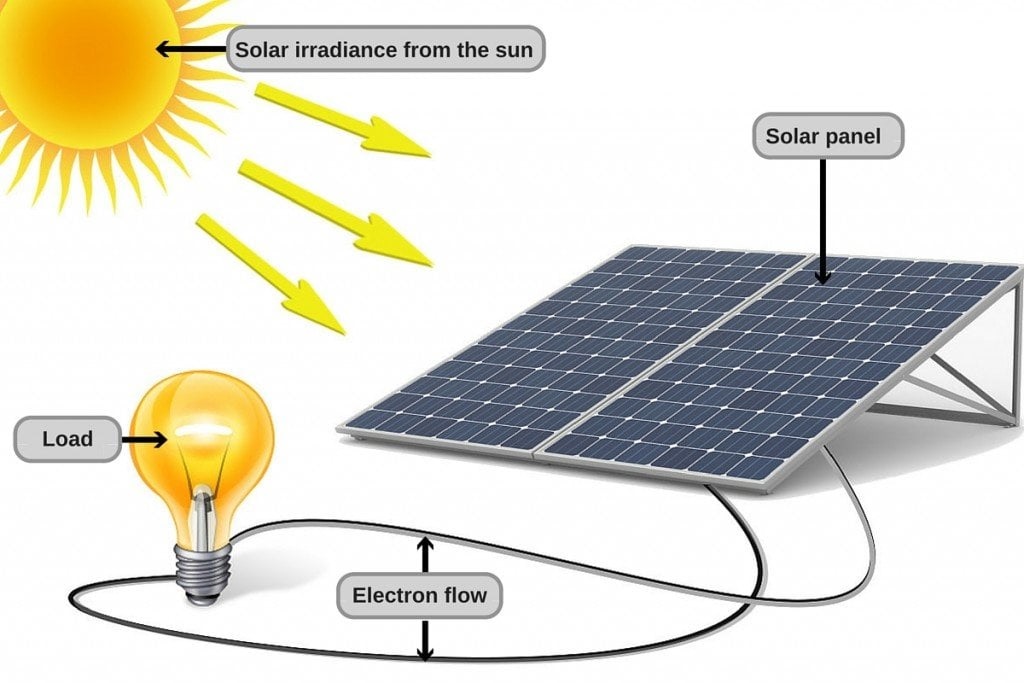Solar panels work by harnessing the energy from sunlight and converting it into electricity through a process called the photovoltaic effect. Here’s a step-by-step explanation of how solar panels work:
- Photovoltaic Cells: The basic building blocks of a solar panel are photovoltaic cells, also known as solar cells. These cells are typically made from semiconductor materials, such as silicon. Silicon is chosen for its ability to conduct electricity when exposed to light.
- Absorption of Sunlight: When sunlight (photons) strikes the surface of the solar panel, it penetrates the protective cover glass and reaches the photovoltaic cells.
- Generation of Electron-Hole Pairs: When sunlight hits the photovoltaic cell, it transfers energy to electrons in the semiconductor material. This energy causes some of the electrons to break free from their normal positions in the atoms, creating electron-hole pairs.
- Creation of Electric Current: The movement of these free electrons creates an electric current. This flow of electrons is what generates electricity.
- Electric Field: Within the solar cell, there is an electric field created by the internal structure of the cell. This electric field acts as a force that drives the separated electrons and holes in opposite directions.
- Collection of Electrons: The electric field causes the free electrons to move toward the front surface of the cell, while the positively charged holes move toward the rear surface.
- Electrical Contacts: The front and rear surfaces of the solar cell have metal contacts. These contacts allow the generated electricity to be collected and transferred out of the cell in the form of direct current (DC) electricity.
- Current for Use: The DC electricity generated by individual cells within a solar panel is then collected and combined. It can be used directly to power electrical devices or stored in batteries for later use.
- Inverter Conversion: For many applications, the DC electricity from the solar panels is converted into alternating current (AC) electricity using an inverter. Most household appliances and the grid operate on AC electricity. The inverter ensures that the electricity produced is compatible with your electrical system.
- Grid Connection (if applicable): In grid-connected solar systems, excess electricity can be fed back into the electrical grid, and you may receive credits or compensation for the surplus energy. Net metering is a common arrangement in grid-connected solar installations.
- Monitoring and Control: Modern solar systems often include monitoring and control systems that track the performance of the panels and ensure they are operating optimally.
Solar panels continuously generate electricity as long as they are exposed to sunlight. Their efficiency and electricity output depend on factors such as the quality of the solar cells, the angle and orientation of the panels, shading, and the intensity of sunlight.
Solar energy is a clean and renewable source of electricity, making it an environmentally friendly option for reducing reliance on fossil fuels and decreasing greenhouse gas emissions.


